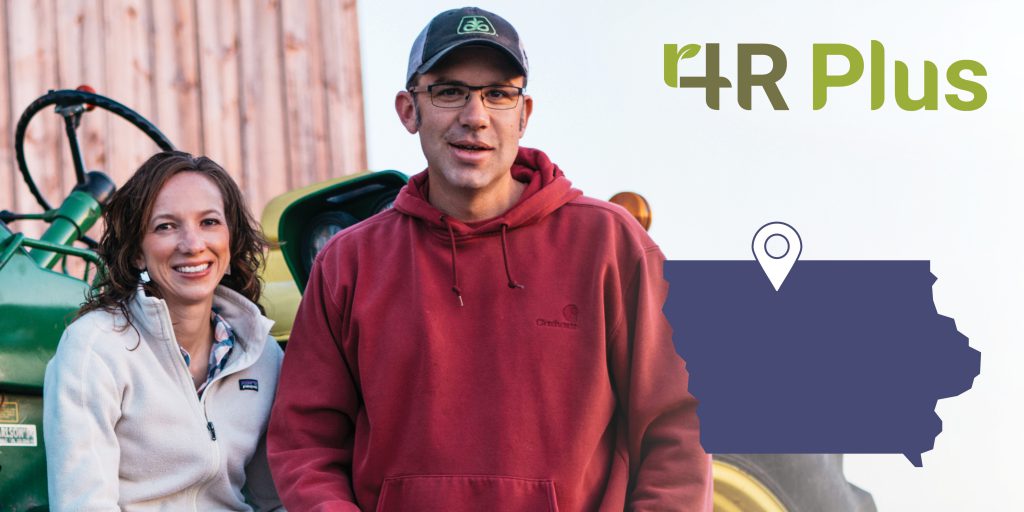 On the mostly flat landscape, Kossuth County’s Matt and Nancy Bormann have peace of mind knowing the land is prepped for spring planting. Over the last 10 years they changed tillage practices and now farm using a variety of no-till, strip-till and vertical-till to keep the soil as undisturbed as possible. That, combined with planting cover crops on as many acres as possible, has significantly improved soil structure for timely spring planting.
On the mostly flat landscape, Kossuth County’s Matt and Nancy Bormann have peace of mind knowing the land is prepped for spring planting. Over the last 10 years they changed tillage practices and now farm using a variety of no-till, strip-till and vertical-till to keep the soil as undisturbed as possible. That, combined with planting cover crops on as many acres as possible, has significantly improved soil structure for timely spring planting.
In the full corn-soybean rotation, soybeans are no-tilled into green cover crops, or vertical-tilled in one pass. Strips are prepared in the fall for spring corn planting. “Fertilizer is precisely placed in the strips, which reduces time and fuel because there’s fewer passes across the field,” said Matt. “This system reduces compaction and creates the perfect seedbed. The soil holds more moisture, and nutrients have a greater chance of staying on the field where they belong. We are ready to plant as soon as the weather cooperates.”
He encourages farmers to do tillage trials of their own. “I hear farmers say they have to work the soil to break up compaction, but tillage is actually the culprit of compaction,” Matt said. “Changing my tillage practices took a shift in mindset. But after years of doing trials and seeing the positive results of side-by-side comparisons, I firmly believe flat land doesn’t need to be ripped up to be productive.”
When he started farming, Matt remembers watching soil leave the farm with a big rain. “The rain drains off the land in one direction and soil moves with the water,” he said. “Now the soil stays where it belongs. I wish I had switched to this tillage system sooner because I hate losing soil. I’m able to plant sooner and don’t leave big ruts after a big rain event.”

Nancy, a Certified Crop Advisor, says soil testing done every three to four years creates a way to benchmark fertility, saves money and the precise application reduces nitrogen from entering Iowa waterways. “Why would you spend money buying fertilizer if you don’t need it?” she said. “We have a three-pass corn nitrogen program. We put a third in the strip in the fall in the form of encapsulated urea, a third in the spring when we plant and then side-dress the last third after the corn is up.”
The Bormanns continue to increase cover crop acreage and seeded one-third of the ground they farm last fall. “We have the most success with rye. It does a fantastic job of retaining nutrients, holding the soil in place and suppressing weeds, which has lowered herbicide costs,” Matt said. “Those benefits alone pay for the cost of the cover crop seed.
“I’ll make the argument all day long that you’ll be able to plant soybeans sooner on a wet farm if you are planting in standing rye,” Matt added. “It took us some time to get comfortable planting into green cover crops; it works well. The rye absorbs water and creates a mat for the planter to ride across. It also is a good way to clean a planter. The row units shine after planting into standing rye.” (Link to related information.)
The Bormanns made a conscious decision to farm more sustainable using 4R Plus practices and see value in protecting the soil. “If you have money in another asset, such as a house or a building, you protect it,” Matt said. “If the roof on your house leaks or the steel blows off a shed you fix it. Why not invest in the soil? The soil is our future.”
Click here to ask the Bormann family a question about their farming operation.
